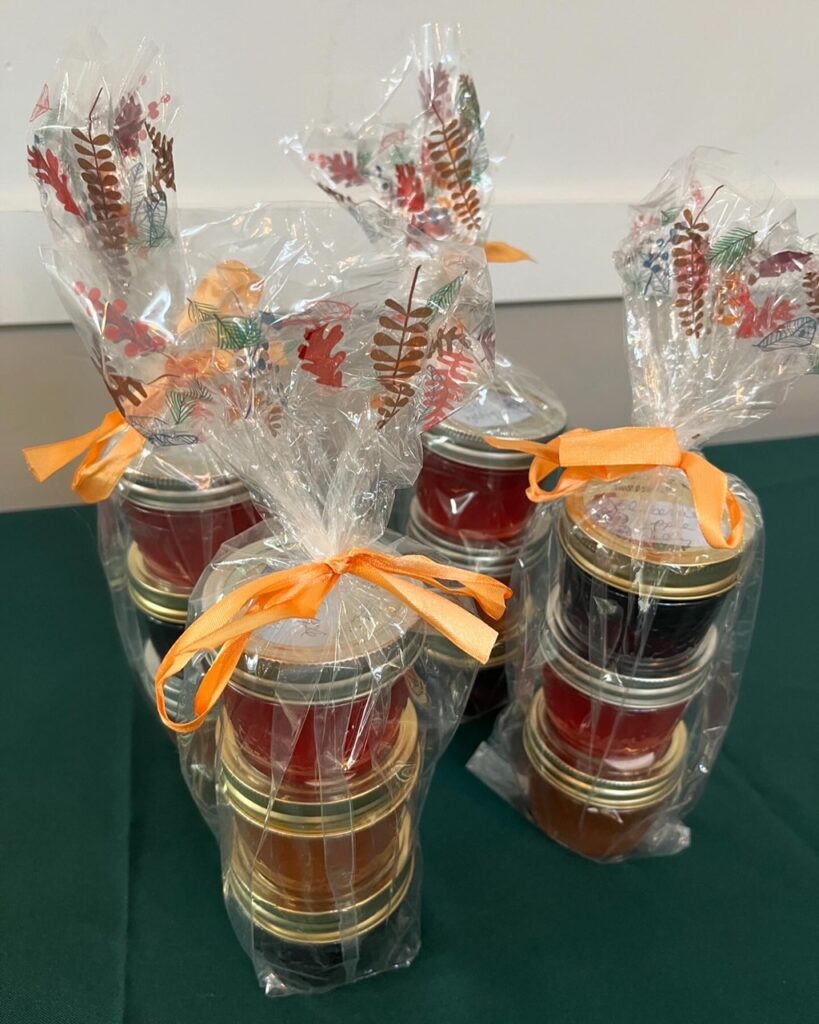Today, Saturday, Sept 21, Free the Fern was honoured to have Elder Marge Wylie and her friend, Corinne Stadel, lead a Crab apple Jelly & Jam Workshop.
12 community members gathered at the Kinross Creek Co-op common room. Marge shared her techniques for preserving, while Corrine demonstrated the process for making blackberry jam. Participans also enjoyed sampling a variety of jam on fresh made bannock prepared by Marge.

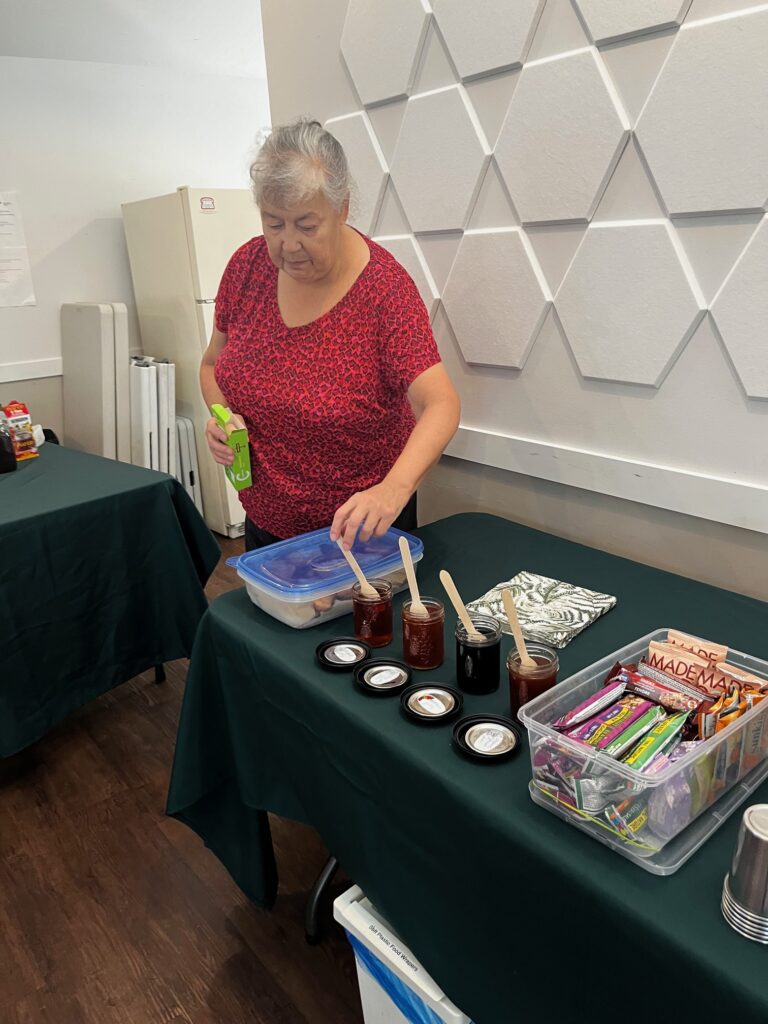
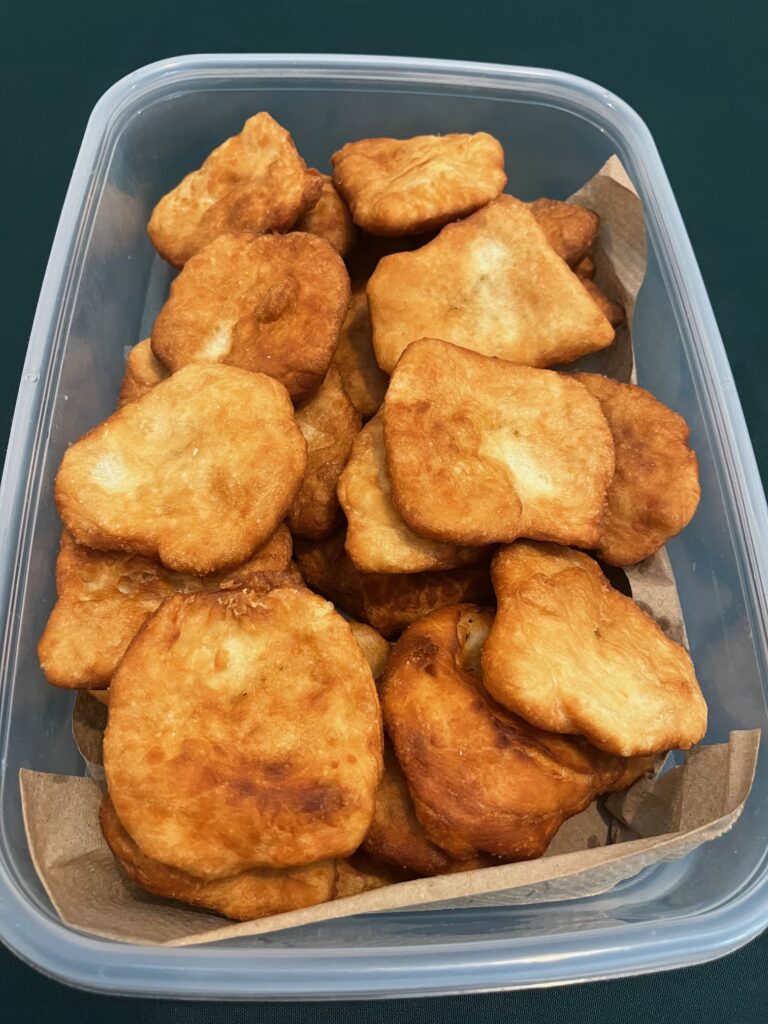
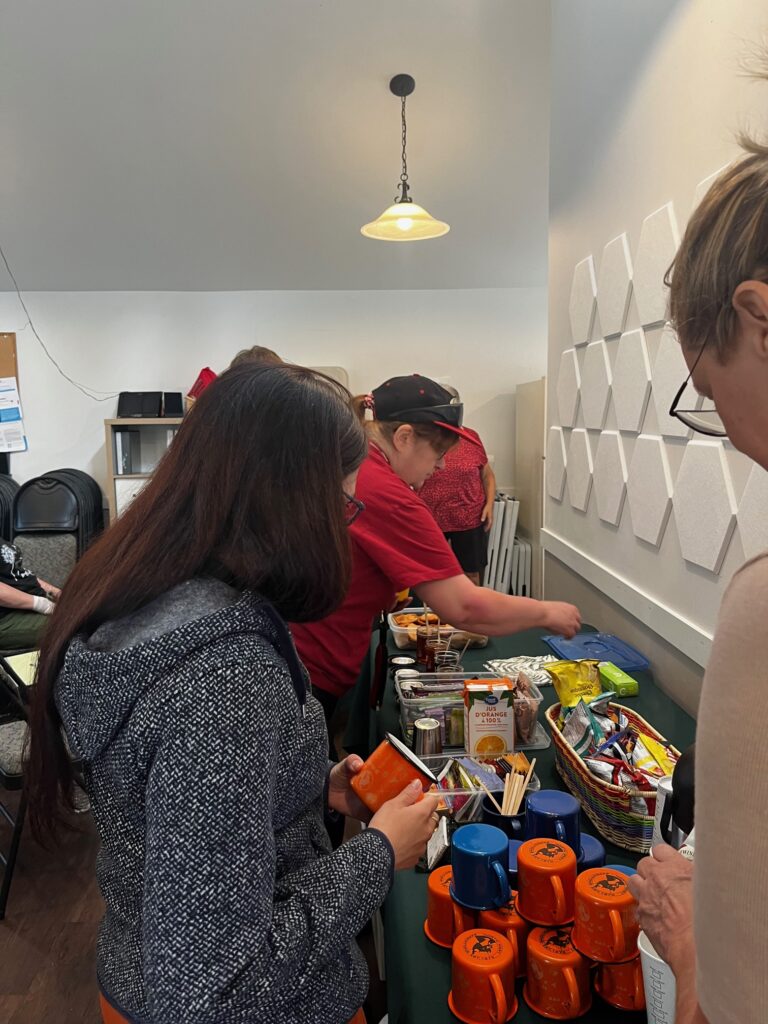
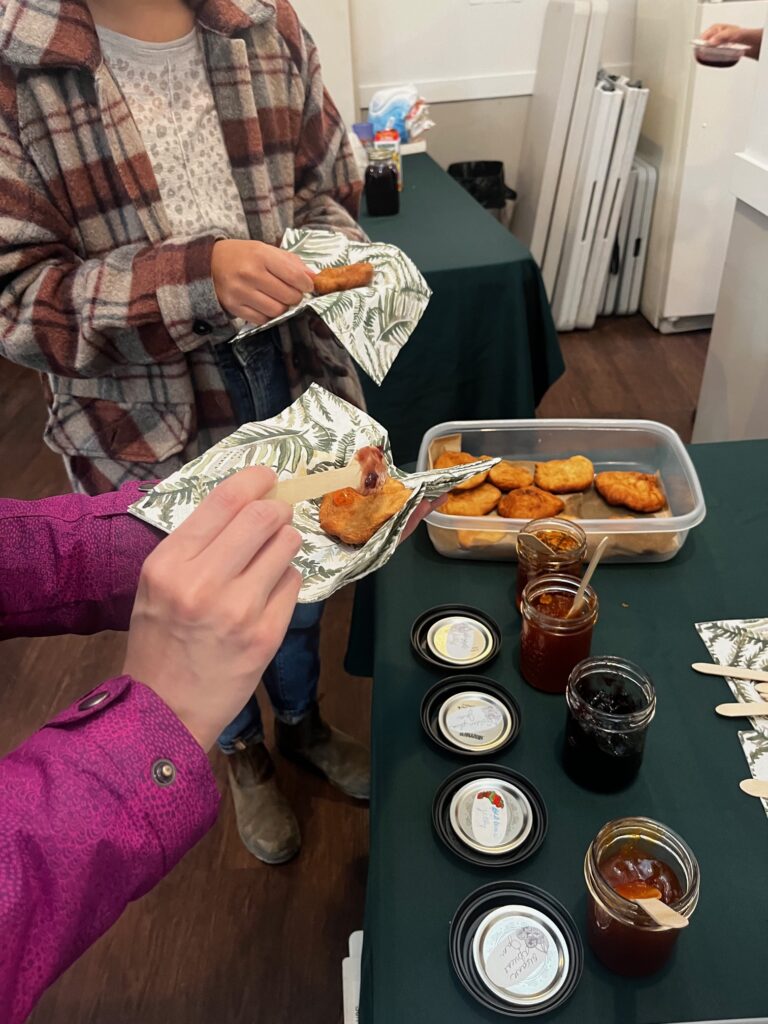
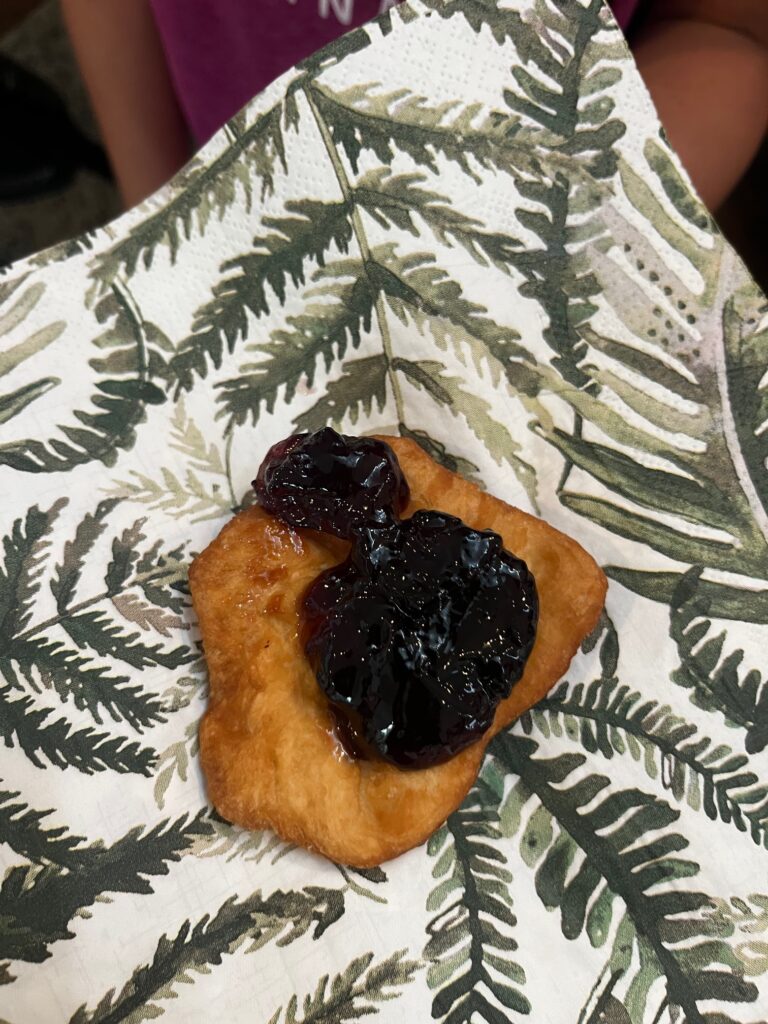
Jam & Jelly Making
Jam and jelly are two types of preserves. They differ in that jam uses the fruit or berry pulp (often including the seeds), while jelly uses just the juice of a fruit or berry. You can find supplies for preparing both at your local Canadian Tire.

Crab apple Jelly
Crab apples are too sour to eat fresh off the tree, so they need preparation as a jelly before consuming.
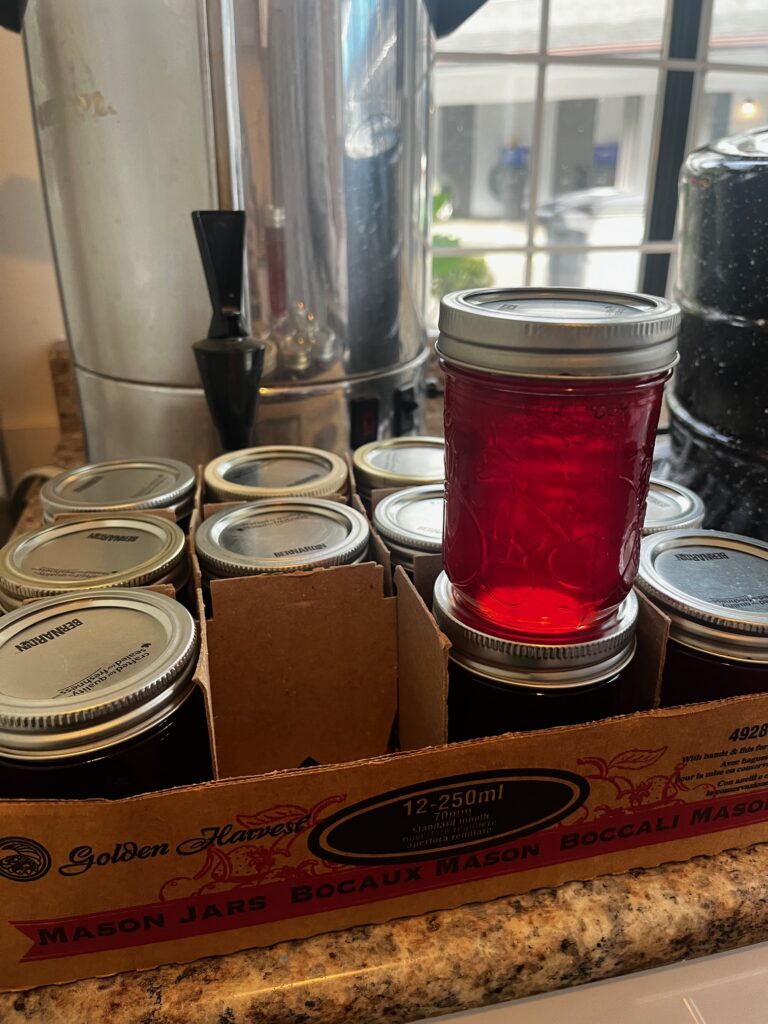
Step 1: Making crab apple Juice
- First, you would begin preparing the crab apples by washing, removing the stems and blossoms (no need to peel them).
- Next, you would add a bit of water to the crab apples and boil them in a pot from about 15-20 minutes until the crab apples are mushy.
- You would then place several cheese cloths or a mesh jelly bag over a large bowl and pour the cooked crab apples into it.
- Then, you would let them sit for at least 2 hours or overnight. This would allow the juice from the crab apples to drip down into the bowl. Don’ t squeeze the crab apples, but simply let them sit and the juice drip beneath.
- Once the juice has dripped into the bowl, you now how crab apple juice. This can be preserved in jars or used immediately for making jelly
Step 2: Preparing the jars
- Put water in a canning pot to boil
- Wash mason jars in hot soapy water
- Sterilize the jars for 10 minutes by putting them in the boiling water in the canning pot. This can also be done the modern way by sterilizing them in a dishwasher.
- Put new lids in boiling hot water to soften the seal. Make sure you layer them in the pot, alternating facing up and down, so the seals don’t stick together.
Step 3: Making the Crabapple Jelly
- Take the crabapple juice and add 7 cups of sugar per 5 cups of fruit
- Add pectin for thickening (check inside the box to see the instructions within for specific types of jelly or jam)
- Bring it to a rolling boil for 1 minute
- Using a ladle, scoop out the jelly and pour it into each jar.
- Wipe the rim of each jar with a clean cloth to remove any spills
- Using a knife, run it along the inside of the jars to remove any air bubbles
- Using a magnet lid lifter (can be purchased at Canadian Tire), lift out each metal lid and put them onto each jar
- Let all the jars sit and settle (ideally not moving them for a number of hours). You will hear a “popping” sound as the lids seal to the jars.
Blackberry jam
You can gather Himalayan blackberries that grow wild in our local parks and trails.

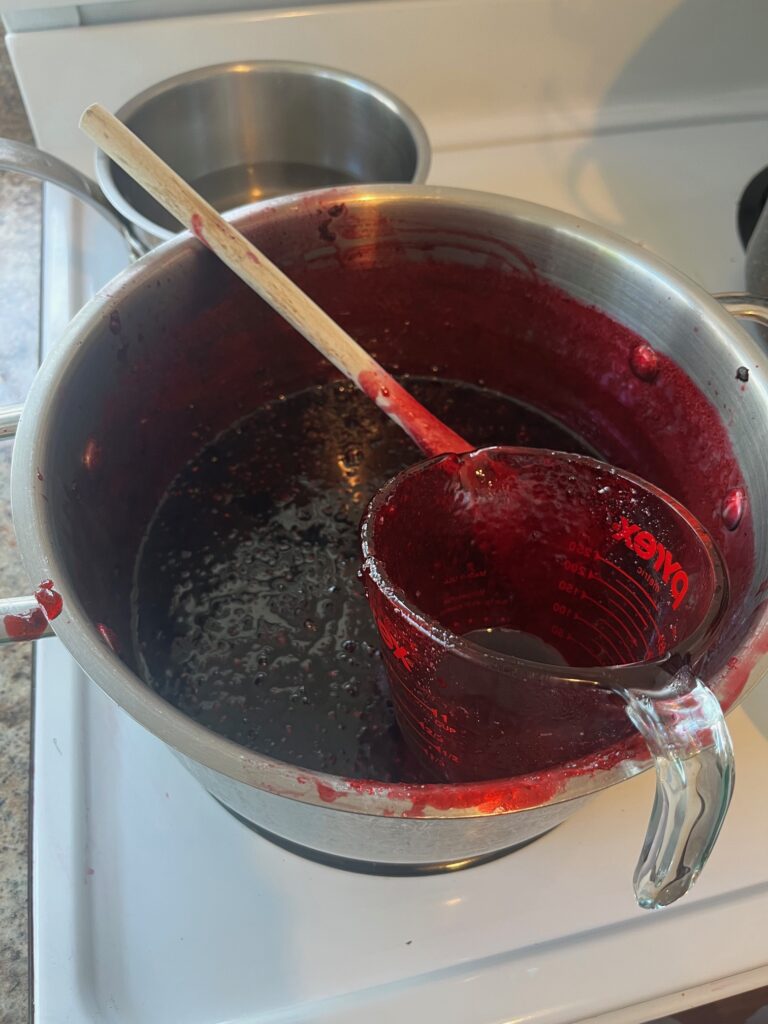
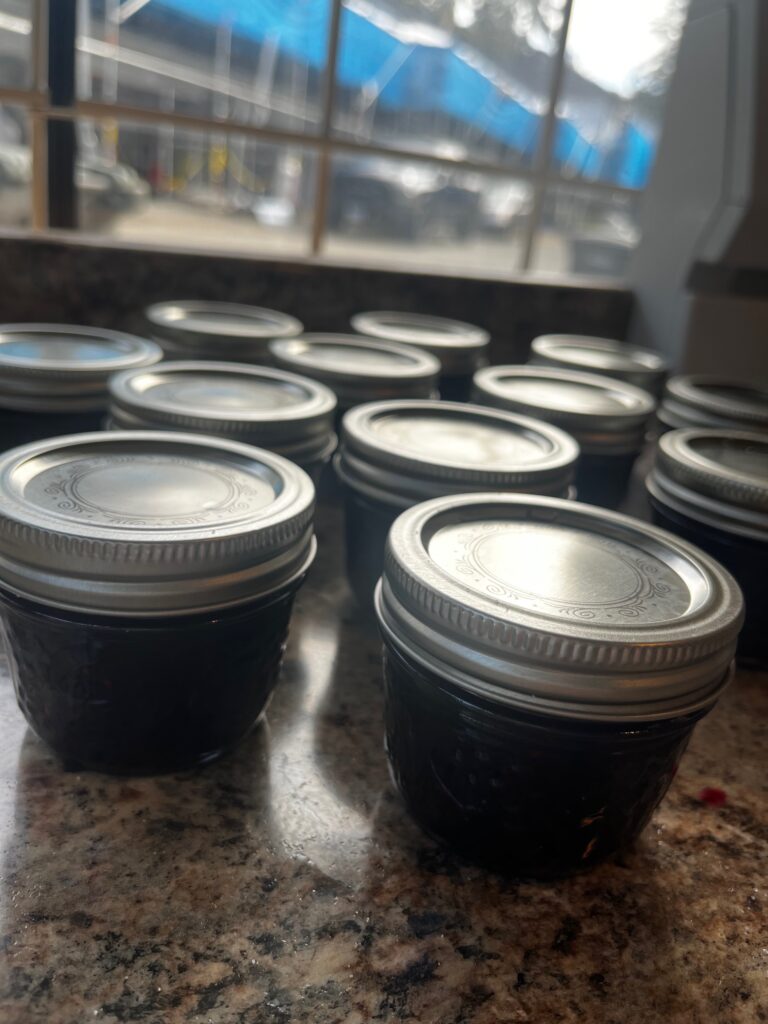
- First, prepare the jars by following Step 2 (above).
- Then, boil blackberries (do not add water) for about 10 minutes (if berries are frozen) or slightly longer if fresh.
- Add 7 cups of sugar for each 5 cups of berry.
- Add pectin (follow the instruction included in the packet) and bring to a rolling boil for 1 minute.
- Using a ladle, scoop out the jam and pour it into each jar.
- Wipe the rim of each jar with a clean cloth to remove any spills.
- Using a knife, run it along the inside of the jars to remove any air bubbles.
- Using a magnet lid lifter (can be purchased at Canadian Tire), lift out each metal lid and put them onto each jar
- Let all the jars sit and settle (ideally not moving them for a number of hours). You will hear a “popping” sound as the lids seal to the jars.
Food safety when preserving
Cleanliness is the most important thing when doing preserving. You do not want to unintendedly introduce bacteria into your preserves, which could lead to serious food poisoning. Therefore, it is advised:
- Before beginning, wash hands very well with warm soapy water
- Do not wear latex gloves while working, as there is a risk for melting the gloves on your hand when handling hot jars.
- Always sterilize jars
- Always use new metal lids, to ensure that the rim of the lids will work to seal effectively
- If a jar does not seal properly, the jam must be refrigerated immediately, rather than storing it on the shelf.
- If the jam is opened in the fridge, it will usually last for a couple of months.
- Jam that is properly sealed and stored on the shelf, can last for up to 2 years.
Thank you to Marge & Corinne for leading the workshop and for all the community members for participating!
